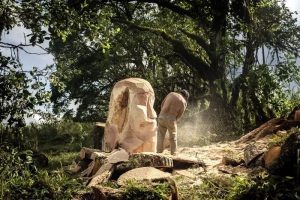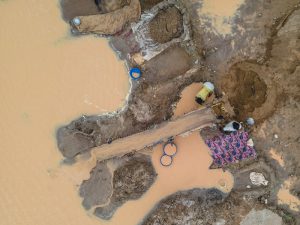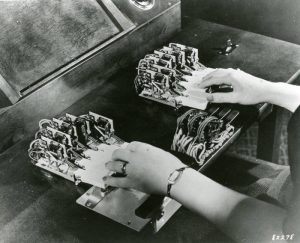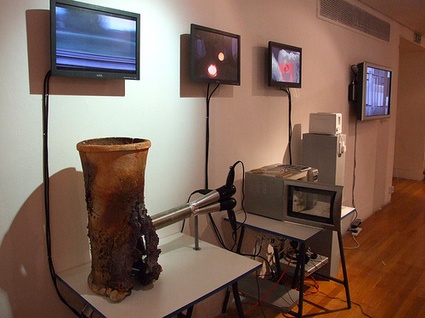
BOOM, the work in progress show at the Royal College of Art in London is on until February 11. Run to Kensington Gore now. You won’t regret it. Architecture and Animation reserve some excellent surprises. And so does the Design Interactions department.
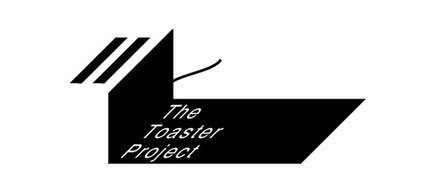
Under its rather unassuming name, The Toaster Project is probably the most ambitious project of the show. It is also a clever and humorous reflection on today’s most burning issues such as sustainability, industrialization, mass consumption, child labour, DIY culture, etc. Its author, Thomas Thwaites is trying to make an electric toaster, from scratch. Beginning with mining the raw materials. And yes, that means extracting oil to make plastic and even processing his own copper (to make the pins of the electric plug, the cord, and internal wires), iron (for the steel grilling apparatus, and the spring to pop up the toast), mica (around which the heating element is wound) and nickel (for the heating elements! The end result (which will hopefully see the light of the day for the RCA Summer show in June) will be a fully functioning toaster.
The extraction and processing of these materials happens on a scale irreconcilable with that of a mass product that Argos sells for a few pounds throughout the UK and that performs the very mundane task of toasting your bread every morning. The result of Thwaites’s endeavour might not be as neat and clean as the Argos model. But maybe i’m being unnecessarily bitchy here. See for yourself what the designer is exhibiting now:
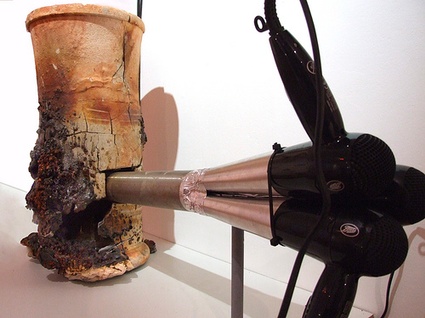
The installation re-creates the first attempt by the designer to melt mineral and turn it into iron using hair dryers. He later tried with a leaf blower and then used his mother’s microwave and china to finally obtain iron. And here is the original toaster model:
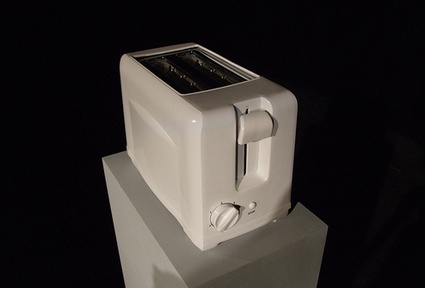
In the designer’s own words which i pasted below:
The point at which it stopped being possible for us to make the things that surround us is long past. To redress the balance I’m making a mass produced object by hand – creating a domestic product on a domestic scale.
(…)
This faintly ridiculous quest to make a toaster from the ‘ground up’ serves as a vehicle through which questions about economics, helplessness and life as a consumer can be investigated. The outcome will be a toaster that I imagine will bear a very imperfect likeness to the ones that we buy – a kind of half-baked, hand made pastiche of a consumer appliance.
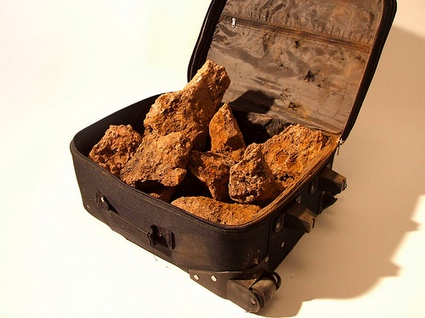 Bringing back raw material from the mine
Bringing back raw material from the mine
Commercial extraction and processing of the necessary materials happens on a scale that is difficult to resolve into the humble toaster. This contrast in scale is a bit absurd – massive industrial activity devoted to making objects which enable us, the consumer, to toast bread more efficiently. However, this ridiculousness dissipates somewhat when you consider that life pre-toasters required stoking the fire when a piece of toast was desired.
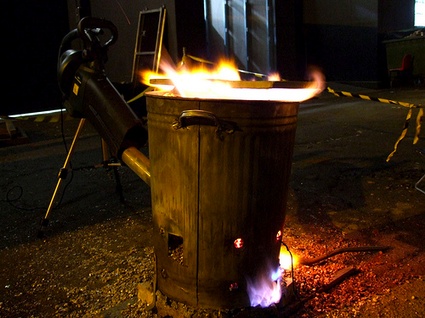 Trying to melt iron using a leaf blower
Trying to melt iron using a leaf blower
Part of the project consists of going to the places where it’s possible to dig up these raw materials. Mining no longer happens in the UK, but the country is dotted with abandoned mines, some having been worked since before the ‘UK’ existed, but all currently uneconomical. We shot some footage at Clearwell Iron mine in South Wales before Christmas. It had an output of thousands of tonnes a week up until the end of World War 2 when it was closed. It is now run as a visitor attraction by Ray and Jonathan, a father and son team. Ray (who originally worked as a miner at Clearwell) was of the view that mining on the huge scales seen today (for instance in Australia) reduces humans to ants, with no understanding of what they’re doing. His son Jonathan is more pragmatic, pointing out that it is the scale of modern industry that gives more of us access to toasters. Their points of view are not incompatible; the question becomes ‘Are toasters worth the inhuman scale on which they’re produced?’
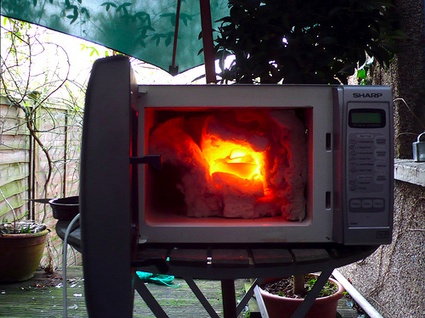 The only known deposit of Nickel in the UK has long since been exhausted. In Finland however exploitation of a huge deposit has begun. I’d very much like to go and bring back a lump of nickel ore from this remote industrial area, and make it in to an element for my toaster. I’m also trying to negotiate a helicopter ride to an oil rig in the North Sea to collect some oil from which I would try (and certainly fail) to make plastic.
The only known deposit of Nickel in the UK has long since been exhausted. In Finland however exploitation of a huge deposit has begun. I’d very much like to go and bring back a lump of nickel ore from this remote industrial area, and make it in to an element for my toaster. I’m also trying to negotiate a helicopter ride to an oil rig in the North Sea to collect some oil from which I would try (and certainly fail) to make plastic.
The point at which it stopped being possible for us to make the things that surround us is long past. For example, my first attempt to extract metal involved a chimney pot, some hairdryers, a leaf blower, and a methodology from the 15th century – this is about the level of technology we can manage when we’re acting alone. I failed to get pure enough iron in this way, though if I’d tried a few more times and refined my technique and knowledge of the process I probably would’ve managed in the end. Instead I found a 2001 patent about industrial smelting of Iron ores using microwave energy. Microwaves are so much more convenient and so I tried to replicate the process using a domestic microwave. After a bit of careful experimentation through which I realised I was unlikely to blow the thing up or cook my insides without realising, I got the timing and ingredients about right and made a blob of iron about as big as a 10p coin. I’m rather proud of it, though it’s only enough to make perhaps one bar of the grill to hold the bread. Still, it’s proof of concept.
The project won’t be a ‘how is it made?’ industrial promo or an anti-industry tirade either. It’s about scale, the total inter-reliance of people and societies, the triviality of some (anti-)globalisation discourse, what we have to lose, and DIY.
All images courtesy of a href=”http://www.thomasthwaites.com/”>Thomas Thwaites.

